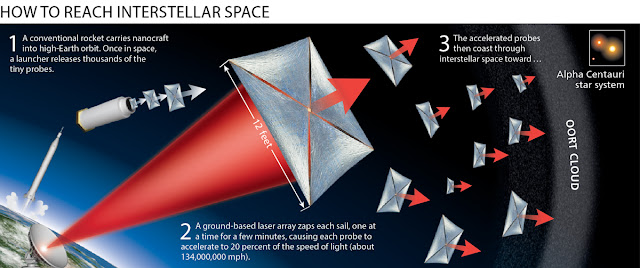When radio telescopes were first turned onto the stars in the 1940’s, radio sources were found all over the place. We were getting some kind of radio signal from almost every direction. You can imagine what some people thought. One of the more interesting ideas was that there was an armada of alien ships out there talking to one another. Astronomers turned their ordinary visible-light telescopes to these radio sources to try to see what was giving off the radio signals (and hoped they wouldn’t see little green men waving back at them).
They found a lot of different things, but no aliens. They found some supernova remnants, star forming regions, and distant galaxies. But there were other odd objects that they discovered that were not so easily classified. These objects looked like tiny dots of light in the sky (like a star does when looking with just our eyes); however, we were looking through massive telescopes and getting goose egg for detail. Because the objects were so blurry, that could only mean that these were mind numbingly far away. The Hubble Telescope has them ranging from 2.6 to 16 billion light-years away.
And this is how we discovered quasars.
 |
| an artist's rendition of a quasar |
Quasar actually stands for Quasi-Stellar Radio Source, but that’s quite a mouthful, so we call them quasars for short. Quasi-Stellar Radio Source also sounds really complex, but when you translate it to simple English, it’s really not. Radio and Source are self-explanatory, but Quasi-Stellar just means star-like. Basically, what we’re talking about is something that looks like a star and gives off a radio signal. Once translated, the names of these things are notoriously uncreative.
Quasars are now believed to be the very bright centres of distant galaxies. Each quasar is many times brighter than our entire galaxy of 200 billion stars. The Quasars are also only about a light day or so across, which is about the size of our solar system. So, if you take its size, and consider how bright it is, a quasar emits baffling amounts of energy. One of the only energy sources strong enough to power quasars are supermassive black holes (black holes with the mass of about a million times the mass of the Sun). These black holes are surrounded by a cloud of rotating dust and gas. As material falls into the black hole, it is heated to millions of degrees, which is spread across the spectrum from radio waves, to visible light, to gamma rays. Compressed to one sentence, a quasar is a shell of super-heated gas surrounding a supermassive black hole.
Even though quasars are named after their radio emissions, only about 10% of the known quasars send out substantial amounts of radio waves. Lovely. So, we now call those “Radio Loud Quasars. “ Usually, the particle jets coming off the central black hole are what create the radio signals, which would explain the low amount of Radio Loud Quasars. The jets of the other galaxies just aren’t pointed at us.
So how are Quasars formed? The short answer is…we don’t know. There are no more quasars for us to study as they form. It is believed they form as a galaxy forms. And with the closest known quasar being 800 million light years away, the youngest quasar is 800 million years old, and none have formed since. Where did they go? No one knows for sure. Some people think the black hole ate all the dust and gas, leaving nothing for the quasar to have, and ceased to exist.
One theory about potentially new Quasar formation was that Quasars first formed through colliding galaxies. Now galaxies colliding into one another are massive collisions. You have the dust and gas from two fully fledged galaxies merging, as well as their central black holes. That’s a whole lot of additional matter to fall towards that new bigger black hole to create some pretty interesting particle jets, and start a new Quasar. The problem is that not many big galaxies are colliding, and fast enough comparatively for us to study a Quasar forming in our, or several lifetimes.




Comments
Post a Comment